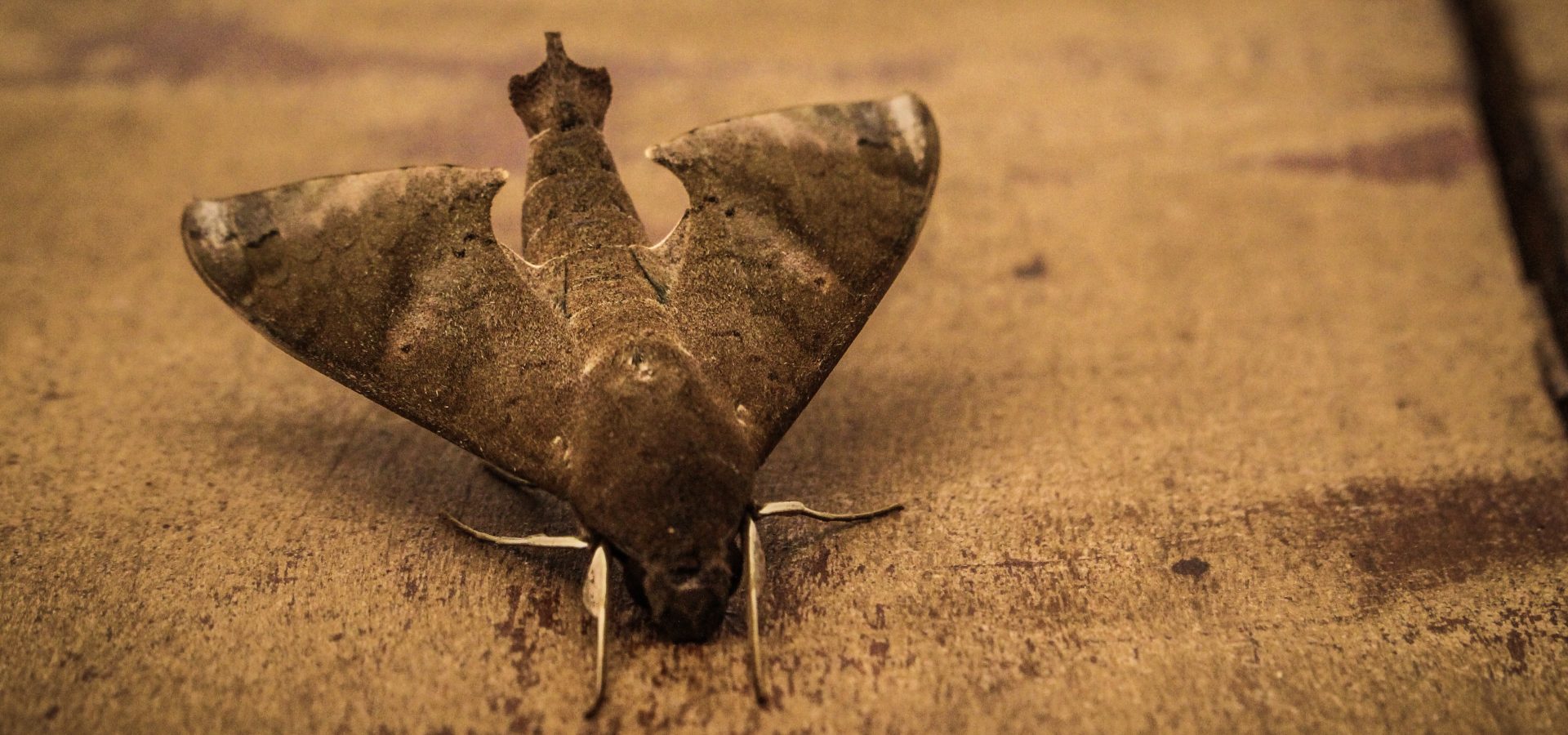This year, we observe the 11th National Moth Week from 23-31 July. It is a global celebration of moths and their remarkable diversity. Moths are underrated insects that are often sidelined by their flamboyant cousins, butterflies. But there’s more than meets the eye!
While moths share the order Lepidoptera with butterflies, they are found in numbers far higher than them. There are nearly 1,60,000 species around the world, with a possibility that several hundreds are yet to be identified. The tiniest one in existence is the Pygmy sorrel moth with a wingspan of just 2.65 millimetres. The Atlas moth, whose wingspan is larger than a human hand at 27 centimetres, is the largest species! About 10,000 species are found here in India itself, each varying in size, pattern and colouration.
Are They All Dull-Coloured?
Although widely known to be so, some moths are actually colourful, have impressive patterns and varying shapes of wings. The popular belief that they are nocturnal creatures is also partially true, as some moths are diurnal and fly during the day. Such species are often spotted procuring nectar from flowers and often confused as being butterflies.
How Are They Different From Butterflies?
Although closely related, moths and butterflies have some differences. Most of them can primarily be identified by their feathery antennae, while butterflies have club-shaped antennae tips. They have a fascinating wing-coupling structure called frenulum which joins the moth’s front wing to the hind wing. This helps the wings function together in flight. Frenulums are not found in butterflies. Another differing point is the transformation stage that occurs for the larvae to become adults — while a moth caterpillar weaves a cocoon, butterfly caterpillars form a hard-covered pupa.
Can Moths Camouflage?
In order to survive in a world full of predatory creatures, moths too have evolved excellent defence mechanisms. While some look like the bark of a tree, others may have markings on their wings that appear to be bird poop. They may even have bold lines or eyespots on their wings that confuse and deter potential predators like birds or small rodents. What’s interesting is that some species resemble other animals and plants in colours and body shapes in order to thwart predation. The Hawk-moth caterpillar, for instance, also takes the form of the venomous Pit-viper snake when threatened. Moreover, it has been observed that some moth species mimic sounds of other species to avoid night predators.
Are They Really Drawn To Light?
Moths, like other animals who fly especially at night, use natural light to navigate. Light from celestial sources like the moon and stars help insects with excellent low light vision to find their way at night. Artificial lights, however, have increased the brightness of their night world, and have proved to be fatal for them. Researchers claim that growing “light pollution” tends to impact the behaviour of animals including moths, who often forget their nocturnal duties and hover around artificial light, as though stunned by it.
Why Are Moths Important To Us?
Moths are an invaluable part of nature’s food web. While they feed on nectar and fruit sap, they form a food source for numerous animals including bats, reptiles, frogs, and birds. Along with their sister group, moths help the ecosystem by pollinating flowers, and some are known as night pollinators too. In fact, various plant species have now become dependent on moths for pollination. They also help in seed and crop production. They are indicator species; their numbers help us track changes in environment, climate and pollution to evaluate the health of an ecosystem.
Do They Hold Any Cultural or Mythological Relevance?
Despite their crucial role, moths are often blacklisted in many cultures. In some, they are associated with the soul of the dead. It has also become the symbol for what is ugly, unfortunate, and negative. Bagworms are commonly used in witchcraft practices. In Nigeria, when they enter a house during the night, it is considered a bad omen.
Some Renowned Moths
- Peppered moth – Inhabiting the lands of Europe, this species gained importance during H.B.D. Kettlewell’s study of industrial melanism in the mid-1950s. It played a crucial role in understanding natural selection.
- Sphinx moth – The fastest flying moth in the world, it can reach up to a speed of 30 miles per hour!
- Luna moth – One of the most beautiful moths, it was named after the Roman moon goddess, Luna, due to its wing pattern.
- Death’s-head hawk moth – It gets its name from the skull-shaped pattern. This moth gained popularity from the films, The Silence of the Lambs and The Mothman Prophecies.
- Atlas moth – Inhabiting Southeast Asian countries, it is the largest known moth species in the world. Its wingspan is about 30 centimetres long!
- Pygmy sorrel moth – The smallest moth, with a wingspan length of only about 2.65 millimetres!
- Sloth moth – This species exclusively resides in the fur of the Three-toed sloth.
- Vampire moth – Males of the species are known to pierce the skin and suck the blood of animals in order to pass on the nutrients to the female while mating.
- Mandolin moth – Males produce a song that sounds like a mandolin by scratching their hindlegs during courtship.
- Hemiceratoides hieroglyphica – It feeds on bird tears while they’re sleeping using its sharp proboscis.
- Water veneer – This species is a true amphibious species, spending large amounts of time in aquatic environments.
- Monopis moth – Instead of laying eggs, this species gives birth to caterpillar larvae.
With their behavioural, aesthetic, and ecological wonders, moths are undeniably marvellous creatures. Find more such interesting content on wildlife in the Wildlife SOS newsletter. Subscribe now!





